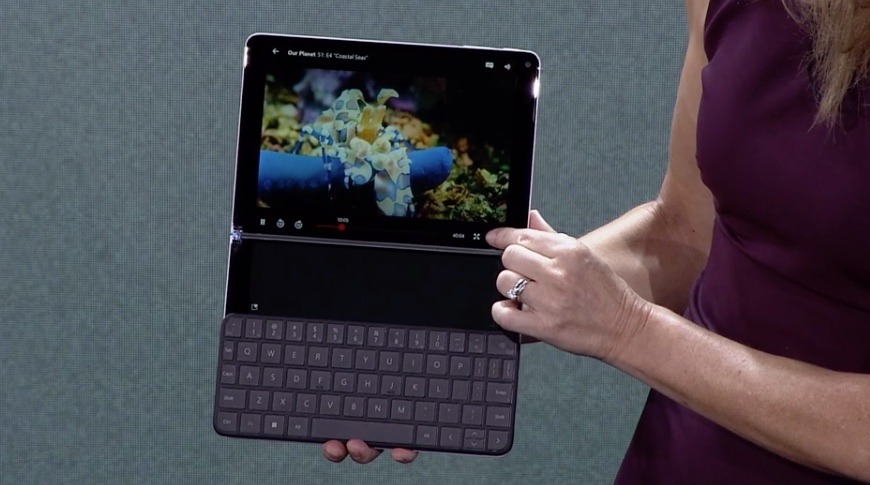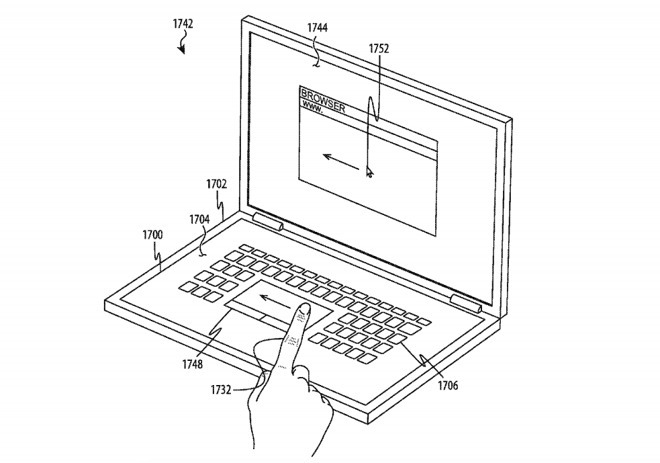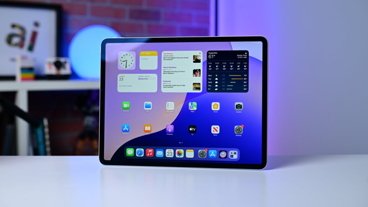At an event on Wednesday, Microsoft debuted a lot of hardware, some of it surprising, and some of it not. But, instead of embracing the standard, Microsoft is starting to do more with controlling the hardware from top to bottom — a trick it learned from Apple.
Some evolution, some revolution
The Surface Pro 7 is simple iteration on the Surface Pro line. Nobody expected it to be any different, or revolutionary.
Where the and fruits of learning from Apple have ripened, is in the Surface Pro X, and the Surface Neo. In both, for the first time, Microsoft has worked with chip manufacturers for a custom chip to do exactly what Microsoft needs, in much the same way that Apple has done with the A-series processor in the iPad, iPhone, and iPod touch.
And, in the Surface Pro X flagship, Microsoft is leaning heavily into Windows on ARM with a custom SQ1 chip. Microsoft's Panos Panay said that the company worked closely with Qualcomm to develop the chip, which is a marked difference than what the company has done before in tablets, by just slapping something already available in a product line.
With the SQ1, Microsoft has turned a corner with ARM and Windows. Instead of a half-baked partial execution of Windows on ARM like it did at the dawn of the Surface line, Microsoft is leveraging the truly massive Windows software library that has been growing for decades. And, on the Intel Lakefield-based Surface Neo for 2020, Windows 10 X is still Windows and will run what PC users would expect it to.
Microsoft is using the acronym WCOS for the core technologies at the heart of all Windows operating system products. Microsoft's WCOS is to Windows 10 and Windows 10 X, as UNIX is to macOS and iOS. It is a fundamental set of Windows functionality that works across different classes of devices like the Surface Neo and the vastly different HoloLens 2 and Surface Hub 2X that are expected to ship in 2020.
WCOS is what allows Windows 10 to evolve into Windows 10 X for the foldable Surface Neo, while still allowing for execution of "classic" Windows 10 applications.
Microsoft has to work on branding, though. Windows 10 X is confusingly incompatible with the ARM-based Surface Pro X.
Something like the Surface Neo is in the works at Apple
Despite the year-long wait for it, Microsoft's Surface Neo is slick, and not altogether unlike what we've seen Apple working on. Apple's keyboard that it introduced in the MacBook has less to do with device thinness, and more to do with teaching a computer user to type on a nearly flat surface.
For years, Apple has been filing for patents on a MacBook-like device with a second screen in place of a keyboard. It also has ideas for haptics, and at least a simulation of a keyboard with discrete keys.
And, Apple's patent drawing looks a lot like the Surface Neo, even down to hinge placement.
What Apple hasn't patented is the concept of "bridging" as Microsoft called it during Wednesday's presentation. Instead of a true folding device, with an edge-to-edge screen encompassing the hinge, Microsoft is using the gap to its advantage, and using it as a user interaction element to split the screen, with one app on one screen, and the other to the right or left depending on orientation.
Microsoft has gone with a fold-over keyboard of some sort. We're not sure if its detachable yet, but it probably is. We were really concerned about the displays when one presenter folded the keyboard between the screens and squeezed the device a little too tight.
What Apple can take from Microsoft
ARM in the Mac is coming, that much is pretty clear. What is less clear is the timetable.
Microsoft isn't just tiptoeing into Windows on ARM anymore with the flagship Surface Pro X. Instead of an almost-Windows like the Windows RT versions of the Surface were at launch seven years ago, the Surface Pro X is a full Windows installation, running Windows on ARM — again with WCOS at the core.
We here at AppleInsider are fully aware of what our demographic is. We know who you are and what you do, based on what you've told us. ARM on Mac may not be good for you at launch, but it will be absolutely fantastic the day that the hardware rolls out for the average Apple user who is using iOS as a gateway to the Mac, rather than the other way around. There are far more of the iOS as a gateway to the Mac folks are there are Mac to iOS, and it has been that way for at least five years.
And, as it evolves, it will be good for AppleInsider current demographic too. But, evolutions take time, and it's time for that to start.
Obsorne effect
Microsoft didn't learn everything it needed to, though. In the case of the Surface Neo announced a year before it ships, Microsoft seems to think that it doesn't need to remember its own history, or even look to the high-profile collapse of the AirPower. And, it is ignoring a big maxim of computer history.
In 2008, Microsoft started promoting the hinged Courier tablet. It was talking about it, it was teasing it, and it was talking to developers about how to make software for it. In 2010, Microsoft confirmed it had effectively given up on shipping the device in that form.
Much, much earlier, in the dawn of the personal computing age, the Osborne effect was born. In 1983, Osborne Computer Company head Adam Osborne pre-announced two new computers that were next up for the company, well in advance of shipment. It was one in a line of mis-steps that led to the death of the company, and the most public one.
The industry was different then, measured in millions of dollars and not trillions. Today, Microsoft is no more doomed from this pre-announcement than any seeming missteps that Apple may make, and the internet and YouTube start screaming about.
Like Apple, The Surface maker also has a massive cash pile and room to fail. Microsoft saying that it wants to bring developers on board with the pre-announcement of the dual-screen experience will absolutely have an impact on the 2019 Surface lineup sales, which won't be all that much to begin with.
Steve Jobs famously said that Apple is a software company that makes hardware. That is true, but it isn't nearly as true as Microsoft being the epitome of that.
Engine of iteration and revolution
Apple has absolute control over the entire stack on the iPad. Every single aspect of the iPad from software to hardware, it maintains, and it manipulates both for a complete package.
When we reviewed the then-current Surface hardware over the summer, we called it the best Windows tablet money could buy. But, we also said that Microsoft was missing an opportunity to make it more than just a tablet, with full stack control, like Apple has.
With the debut of yesterday's products, the company has started those moves. Instead of relying solely on Intel, and picking parts off the shelf, Microsoft is leaning into what could make the products truly great given enough evolution.
An Apple-centric user isn't going to rush out and buy a Surface just because of Wednesday's announcements any more than a Windows-faithful user will buy an iPad when Apple rolls out new models. But, both groups of users stand to benefit.
We've said it before, and we'll say it here again. Apple is better with strong competition. It makes better iPhones because of Samsung. We want Apple to make better computers because of Microsoft — and Microsoft has finally given Apple a reason to do so.
 Mike Wuerthele
Mike Wuerthele








-m.jpg)






 Thomas Sibilly
Thomas Sibilly
 Wesley Hilliard
Wesley Hilliard
 Marko Zivkovic
Marko Zivkovic

 Malcolm Owen
Malcolm Owen

 Amber Neely
Amber Neely










34 Comments
I think they could've avoided the "only Microsoft can do" over-selling sales pitch. That worked well for Apple, but sounds false in this day and age when several companies are excelling at design.
Apple NEEDS to step up their game with macOS, particularly Finder and making System Preferences launch faster. These seriously feel neglected.
And I love the Dock, but continue to feel Windows die-hards see it as a cartoon, non-Pro interface. Maybe have a "Pro" configuration — the same great macOS, but configured with a more Pro appearance with the flip of a switch, much like they have the "Simple Finder" mode.
"
Would love for Apple to release this form factor but running iPadOS